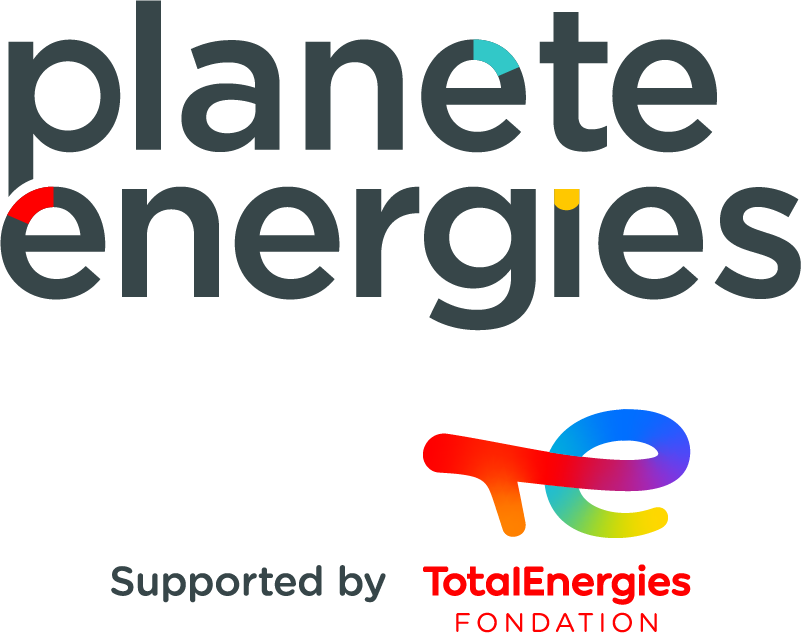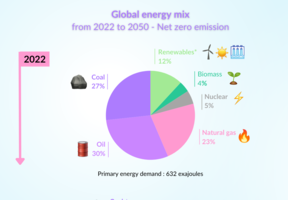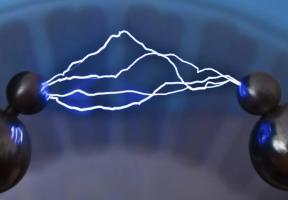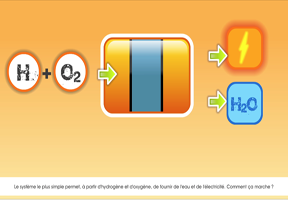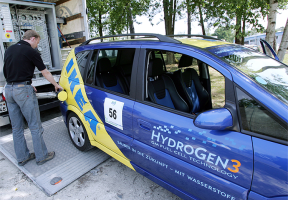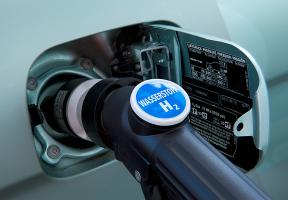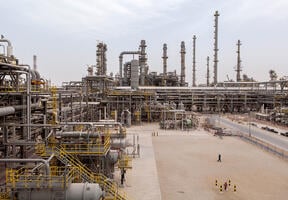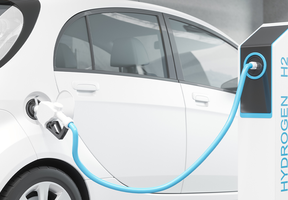Japan and Its Advanced Hydrogen Research
Updated on 07.09.202110 min read
Japan is the most advanced country in the world in terms of research, with cell-powered products already available on the market, including passenger cars and building heating systems. Japanese researchers want to go a step further by aiming for a hydrogen society where hydrogen is produced, traded and consumed in large quantities, as oil is today.

© ETIENNE BALMER / AFP - A liquid hydrogen reservoir measuring 2,500 cubic meters in the Port of Kobe. A terminal for importing hydrogen, particularly from Australia, has been installed in Japan’s major Port of Osaka.
A Champion in Technology
For many years now, Japan has been a top-ranking country when it comes to the resources it devotes to R&D per inhabitant. With just 2% of the world’s population, it accounts for 20% of global R&D investment.
Japan’s research strategy involves conducting a systematic review of every option over a long period, integrating academic research and industrial development. Hydrogen energy is a prime example of this comprehensive approach. Japanese researchers did not break down their research into the various uses of hydrogen. Instead, they conducted a parallel study of its applications in all sectors. They examined its potential uses in industry, housing and all forms of mobility. From the very start, they considered how to produce hydrogen, which countries would be best suited, and how to transport it to Japan. Their multi-faceted approach is outlined in a roadmap.
Stationary Installations
Hydrogen fuel cells were first used in stationary installations to provide buildings with power and heat. Hydrogen is produced using a municipal gas supply in a boiler. The generates electric current and gives off heat, which is recovered for hot water and heating.
The Japanese tradition of highly standardized, similar housing is well-suited to the development of these wardrobe-sized static boilers. The Japanese government financially backs this sector, which plans to have 5.3 million units in 2035.
Hydrogen Cars
Hydrogen was then applied to mobility. Manufacturers first produced buses and trucks, then the first individual cars, such as the Toyota Mirai and the Honda Clarity, which appeared in 2015. It is still a niche market, with a target of 200,000 cars by 2025.
The use of hydrogen cars requires a sufficiently dense supply network. More than 80 hydrogen filling stations are set to open along the Tokyo-Osaka corridor, a large urban area between the country’s central and southern regions. Furthermore, hydrogen gas compressed at 700 bar requires stringent safety rules, to which the Japanese traditionally lend great importance. As a result, each hydrogen station is very expensive, costing as much as six or seven times more than a conventional service station, adding to the sector’s overall cost.
Long-Term Outlook
Japan’s experts have examined the difficult issue of hydrogen production. Reforming hydrocarbons is the most cost-effective method, but it does not produce low-carbon as a final product. Electrolysis using renewably sourced power is currently three to four times more expensive, and Japan’s wind and solar power potential is low.
Consequently, the Japanese researchers behind the roadmap quickly focused on importing hydrogen from countries with a significant energy potential, such as Australia and the Gulf countries.
Three options became apparent for its transportation:
- Compressed gas. This solution involves significant compression-related costs and technical challenges, as hydrogen is highly volatile.
- Cryogenics. This method involves transporting hydrogen in liquid form at a very low temperature. Japan’s top companies are currently working on the subject.
- Combination with another
. The idea is to combine a hydrogen
with another atom in order to produce a molecule that can be transported more easily, then recover the hydrogen upon arrival using a reverse process1. Most solutions involve the use of carbon. Japanese experts have also begun looking into nitrogen, another highly abundant atom in the atmosphere. Combined with hydrogen, it forms a very simple molecule, ammonia (NH3), which chemists have been producing for more than 100 years. Transported by chemical tankers, the molecule is already traded worldwide.
Source:
- Japanese chemists have, for example, tested methanol (CH3OH) and dimethyl ether (CH3OCH3).
